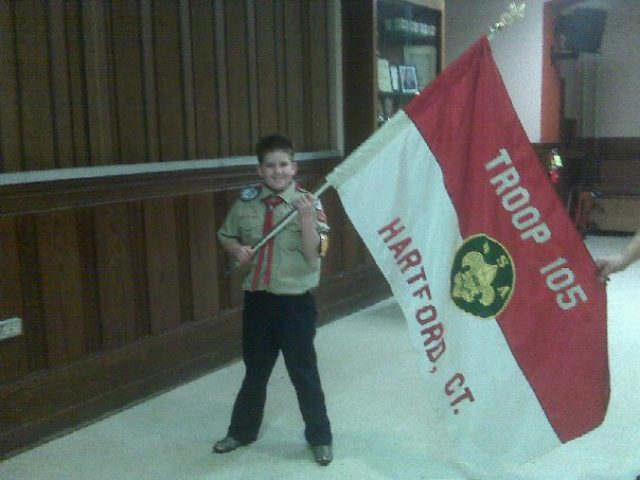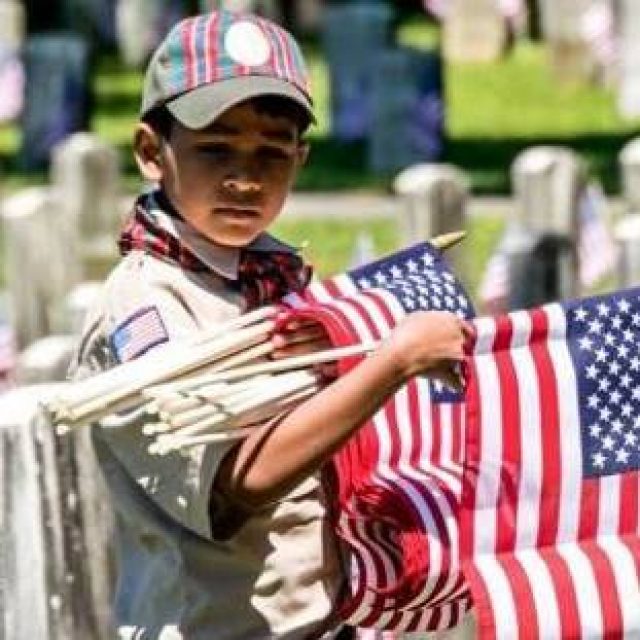About

About TROOP 105
One of Hartford's oldest and most active troops, over the years Troop 105 has built a Hartford Veterans Memorial, marched in parades, honored Mayors and Governors, served at homeless shelters, revitalized parks and community gardens. Meetings every Thursday at the St. Lawrence O’Toole Church in Hartford, under the direction of Scoutmaster of Alan Long Boy scout troop 105 continues to add to the vitality of Hartford.
The strong generation past and heart of the city drives the troop to what it is today.

Advancement
The core of the Boy Scout program is its advancement. With a clear track of work and diligence, a boy scout can move from scout to Eagle.
Troop 105 Exists To Improve Hartford!
The troop has been home in Hartford, Connecticut for almost 100 years! This has been engrained in the generations of scouts and pushes it forward.
Our Eagle Scouts
The fact that a boy is an Eagle Scout has always carried with it a special significance, not only in Scouting but also as he enters higher education, business or industry, and community service. The award is a performance-based achievement whose standards have been well-maintained over the years. Not every boy who joins a Boy Scout troop earns the Eagle Scout rank; only about 4 percent of all Boy Scouts do so. This represents more than 1 million Boy Scouts who have earned the rank since 1911. Nevertheless, the goals of Scouting—citizenship training, character development, and personal fitness—remain important for all Scouts, whether or not they attain the Eagle Scout rank.
Troop 105 Eagle Scouts
George W. Dixon 1952
Thomas F. Fogarty 1961
Bradford A.Sperry 1966
Jeffrey J. Sawlan 1966
Thomas A. Weaver 1968
Thomas E. Obremski 1968
William J. Gervais 1968
Frank P. Wells 1969
John W. Therriault 1969
Robert N. Weaver 1969
Bruce M. Weller 1969
Joseph E. Leone 1970
Joseph F. Flannery 1971
Danny F. Howe 1971
Raymond J. Schmidt 1974
David E. Dube 1974
Michael T. Darrell 1975
George H. Darrell 1978
Steven W. Tabara 1978
David J. Obedzinski 1979
Joseph J. Buyak 1981
Kevin L. Bouchard 1981
John P. Saunders 1987
Richard H. Collins 1988
Robert F. Davis 1988
David W. Taylor 1988
Jose O. Espejo 1989
Alan P. Long 1992
Justin E. Edward 1992
Roberto Sanchez 1992
Chad M. Schrock 1993
Mark R. Ruede Jr. 1993
Michael R. Caruk 1994
Michael S. Elterich 1994
Faqiruddin Ahmed 1995
Thomas A. Castagno 1995
Daniel J. Ruede 1996
Michael A. Michelini 1996
Kevin J. DuVerger 1996
Daniel J. Norck 1997
James R. Reed III 1997
Daniel D. Carrier 1997
Nicholas Rodriguez 1998
Matthew J. Sequin 1998
Arturo Arroyo 1999
Dartanion A. Reed 1999
Andrew Blazic 2000
Alexandro Dones 2000
George A. Kazakos 2004
Michael R. Kelley 2005
Quintin A. Reed 2011
Matthew J. Marchetti 2013
Vibbishan S. Rama 2013
Williamjohn T. Berian 2014
Joseph L. Thompson 2014
Gabriel Mantilla JR 2016
William L. Morin 2018
Advancement
Advancement, one of the eight methods by which the aims of Scouting are achieved, has four steps through each award level. First, the Scout learns. Much of his learning comes from other boys in his patrol or troop and by active participation in troop program. His patrol activities are directed toward the skills he needs. Every troop hike, camping trip, or other activity offers potential learning experiences. A Scout learns to pitch a tent by pitching one, to use a compass by finding directions, and to cook a meal by having to prepare and eat it. Second, the Scout is tested. The specific requirements determine the kind of testing. Verbal testing is sufficient in some instances. In other instances, a Scout must demonstrate his skills by doing. Third, the Scout is reviewed. The purpose of the review is to ensure that all requirements for advancement have been met. This includes a check of the Scout’s attitude and practice of the ideals of Scouting, in addition to his Scout craft skills. The decision regarding whether a Scout has met the required standards to qualify for rank advancement begins with the troop and, for the Eagle Scout rank, is approved by the district, local council, and finally, the National Council. Fourth, the Scout is recognized. The final step in advancement involves presentation of the badge, usually at a ceremony before the entire troop.
1.
Troop 105 Established in Hartford.
2.
First Eagle Scout passes the program.
3.
Scoutmasters exchange hands and troop grows.

4.
Over 30 eagle scouts have gone through the Troop 105 Boy Scout program. Making it one of the largest and most successful troops in the country.
5.
Troop 105 welcomes new boys, their parents, and anyone in the local community who wants to contribute to the boy scout vision and mission of developing boys to become great men.
